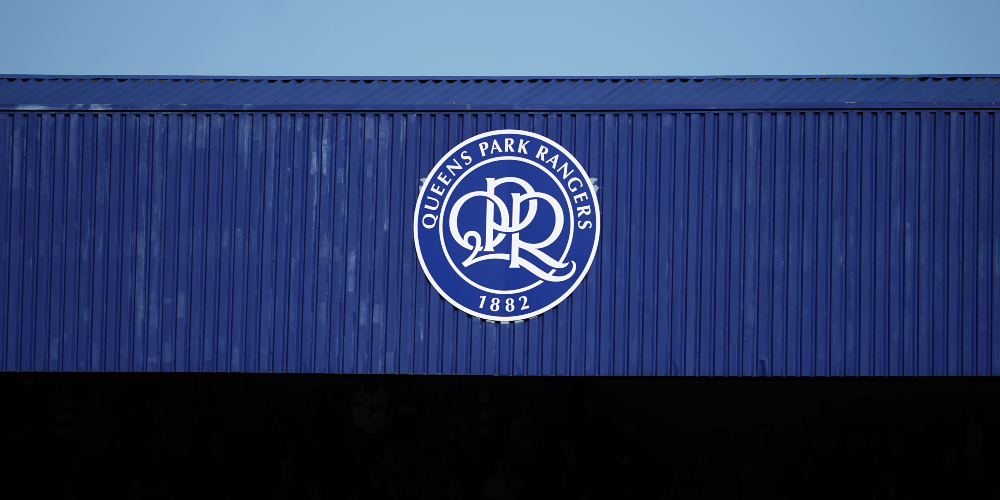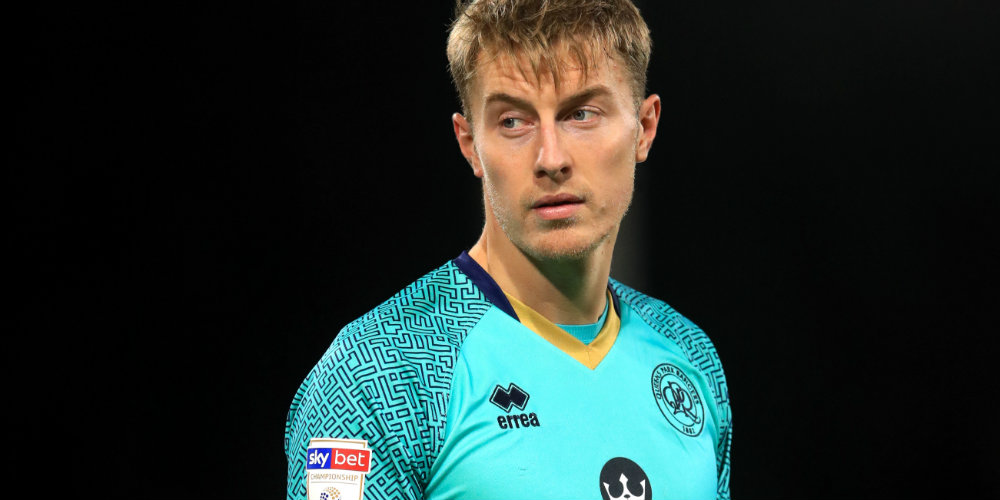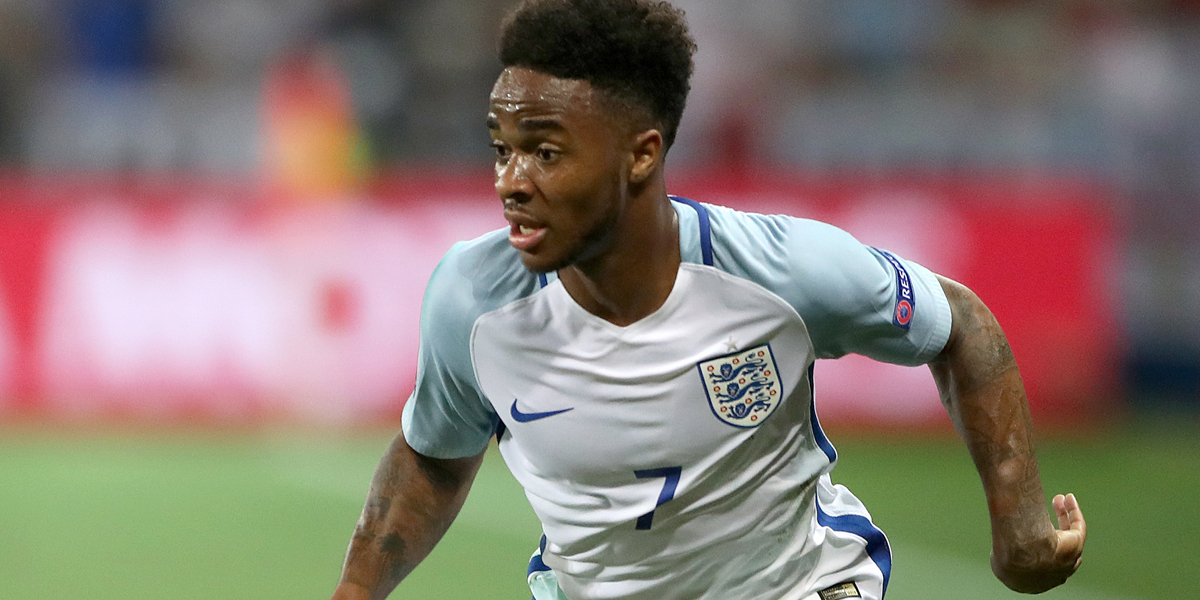QPR academy chief believes club can become ‘first pick’ for young talent

QPR’s academy director Alex Carroll believes the move to a new training ground will boost the club’s ability to attract and keep young players, but confirmed it will remain a Category Two system.
Rangers formally completed the acquisition of the freehold for the 27-acre Concorde Club in Heston from Imperial College in December after contracts had been exchanged in July.
The club are now awaiting final planning approval from the London Borough of Hounslow so building work can get under way, with the board privately hopeful of completion by mid-2022.
QPR’s academy is currently based at Heston, which is less than two miles away from from the first-team’s base in Harlington, with all of the club’s football departments to be accommodated under the one roof once the work is concluded.
The existing buildings will be demolished, then rebuilt and eventually house the sports science, medical, video analysis and media teams, with classrooms, meeting areas and a gym incorporated into the main building area.
Seven new grass pitches will be laid – some of which will be floodlit – along with an artificial 5G surface and an indoor training area.
All of that will give the QPR the infrastructural capabilities to apply for Category One status under the Premier League’s Elite Player Performance Plan (EPPP) guidelines.
But in addition to those mandatory upgrades, Category One programs demand the employment of several more full-time academy positions.
These include a head of education, psychologists, sports scientists and strength and conditioning coaches for all age groups in addition to one coach for every eight players from the Under-11s upwards.
That is something Carroll believes is not completely necessary for young players to thrive – and why the club will remain as a Category Two system for now.
The main benefits of being a category one club are that some of the best young players in the country get to play against one another each week in the Premier League 2 Under-23 league and the Under-18 equivalent.
Category One clubs also, crucially, do not have to conform to the rule which prevents players being signed from more than 90 minutes away from their training ground, giving them the freedom to scour the country for young talent.
Software before hardware
EPPP also allows clubs the right to sign youngsters from other teams – often with minimal compensation needing to be paid in return.
But although Carroll admits there are obvious benefits to being a Category One set-up, he insists creating a good environment is of greater importance and in no way reflects a reduction in the quality of coaching.
“Cat one does hold weight in terms of recruitment and it is a draw for parents,” said Carroll.
“But I find it difficult when people generalise Cat One or Cat Two and say ‘He has to go to a Cat One or he is only at a Cat Two’, because that is nonsense.
“There are some incredible Cat One academies but there are also some incredible Cat twos.
“I like to think we are one of those and there is no reason why, as a Cat Two, your environment can’t be world class.
“It’s very much more about the software than the hardware.
“The hardware helps, don’t get me wrong, but the people make the environment. There is no reason why you cannot excel as a Cat Two.
“In terms of this club and the future, the training ground will give us the option of applying for Cat One should that be what the shareholders want to go for in time.
“At the moment we wouldn’t be in a position to apply for it. It would take a lot more investment in people and facilities but it will be a conversation that will come up later down the line.
“But if we continue to be a flourishing Cat Two we might not have to go down that road, but we will review it as we get there and decide whether it is the most appropriate course for what we are trying to achieve.”
Starting from scratch
After several years of neglect dating back to the Chris Wright and the Gianni Paladini-Flavio Briatore-ownership eras, when the club moved away from investing in the production of home-grown players, the academy has started to once again provide pathways to the first team.
It was kicked-off by the unheralded work of Steve Gallen and Marc Bircham, who despite being given little financial or infrastructural support from previous owners, were instrumental in the development of Darnell Furlong from promising schoolboy to Premier League player and of course helping put Raheem Sterling onto the path to becoming a global superstar.
Up until the sale of Ebere Eze to Crystal Palace for potentially £20m last year, Sterling’s move to Manchester City from Liverpool, which netted Rangers in the region of £9m by way of a sell-on clause, was the record fee received for a player.
Last season, the likes of Joe Lumley, Osman Kakay, Eze, Ilias Chair and Ryan Manning accounted for 160 appearances in the Rangers first team last season, having been nurtured through the academy programme.

Although Kakay and Furlong are the only two graduates to progress from the Under-9s team to the Championship side, Carroll said the recent flow of home-developed youngsters into Mark Warburton’s squad is a massive step in the right direction for the club.
Unlike the likes of Watford and Swansea, who have reduced their academy spending to cut costs following relegation from the Premier League, Carroll said the QPR board are are keen to continue investing in youth.
“We have taken massive strides but ultimately we will be judged on product of investment,” said Carroll.
“Clubs are being held more to account in youth development programmes and people are looking at balance sheets and thinking where can they cut costs.
“They may look to scale down their academies, but I like to think that given the trajectory we are on, there hasn’t been those question marks around here.
“Investment in the youth is viewed as really important to building a sustainable football club and the academy is vital to that.”
Financial returns
The sales of Furlong and Eze have netted the club almost £20m over the last two years but Carroll believes a young player’s value should be quantified by the number of first-team games played and not just on the balance sheet.
“Shareholders are always going to look at different things with academies,” he said.
“They are going to look at a return on investment.
“It’s easy to quantify the worth of a player being sold.
“Darnell for example goes to West Brom and we sold him for a million pounds plus whatever. We got a financial return for that investment.
“But the 75 games we got from him are not quite as easy to quantify.
“Money would have been spent bringing a player in, agents fees, higher wages – you then compare that to what a young homegrown player in the team costs.
“We’ve been able to demonstrate where we can save money by putting a player in the team as well as attracting fees for a player when they move on.”
With such intense competition for young players around the London area from Chelsea, Arsenal, Spurs, Southampton, Fulham, West Ham and Reading, Rangers have often found it hard to keep their best young schoolboy talents.
It’s also made it difficult to attract some of the red-hot local prospects such as Bukayo Saka and Tariq Lamptey who despite growing up in QPR-supporting hotbeds of Greenford and Ruislip respectively, were signed by Arsenal and Chelsea.
But with the the delivery of the new training ground Carroll believes, along with a proven progression to the first team, the club are now a more attractive option for pre-scholar age players and their parents who are often seduced by clubs with better facilities rather than coaching.
“You can’t officially sign for an academy until you are Under-9s, so that stage is quite an interesting one,” he said.
“We have pre-academy training group of Under-7s and Under-8s training with us.
“Parents often tend to take their kids to about three or four different clubs before making a decision on where to send their child.
“One of things that challenge us in our area is that the badges (clubs) are big.
“A parent will often look at a badge first and I don’t begrudge them that.
“Often it comes down to facilities and when you are looking about and drive through your Arsenals at Colney, Chelsea at Cobham and Tottenham at Enfield, you see big expansive driveways, pitches everywhere that are like carpets.
“The kids get five sets of kit, it’s a big draw for them. At QPR they don’t get that.
“I hope now in the future they will get that, but it does mean the bright lights are a big draw for the parents of young children.”
Stopping the exodus
In addition to the challenge of persuading parents of the best players to sign for Rangers, there is then the added task of trying to keep them in the system.
“In terms of where the world is now, we have actually received money for players from Under-9s to Under-23s which is often disappointing but shows we are signing very good young players,” Carroll said.
“It’s an incredible spectrum of activity of what goes on at academy level and we’re incredibly proud of where we have been able to take it.
“I think we are in a much better position to retain them than we were three years ago as there is now an obvious pathway to the first team which is really important.
“Also, because the training ground is very much on the way and work will be starting soon.
“That is really important for us in terms of retaining players and also attracting high-quality staff because you want to come in and work in a place that is nice to go to.”

With the implementation of Brexit now preventing clubs from signing players Under-19 from outside of the UK, Carroll expects there to be greater onus on developing British talent.
From Under-nine to Under-15 level, QPR’s teams play against all Category One and Category Two clubs within the London-southern England area, making it is harder than ever to keep a hidden gem.
“It is trickier being a Cat Two club. Scouts from all over the country know all of our players and know a lot about our players as well,” he said.
“It might be there is more focus on our players when it comes to scholarship age (16) and clubs will come and have a look.
“I’d like to think the strides that we have made, and what is to come in terms of the future, players won’t immediately think going to a Cat one club is going to be immediately good for their career.
“We are in a better position to make them stay and hopefully progress into the first team.
“It doesn’t sit right with me, players being moved around clubs at young ages, and there is a frustration around clubs at the level of compensation that you do receive when a player moves on to another club.
“We’ve seen some boys go at Under-15, Under-16 level who we genuinely felt would be first-team players at our football club for figures that don’t feel right.
“The compensation system does have triggers for finance built in, so if you go and play 10 games in the first team at another club you will receive X-amount from them.
“But what about hopefully the hundreds of games they were going to play for your football club?
“It doesn’t feel right that you get this sort of money. Especially if they get to Premier League where there is such a huge amount of money, it doesn’t feel right. It is something we feel frustrated by.
“I’d like to think we can start retaining as many as we can, but in the last five years we’ve lost 10 players from under-9s upwards.
“We are hoping to keep as many we can and keep the production line we currently have going.”
Carroll says the news of the new training ground was greeted with as much excitement from the academy youngsters as it was by the fans and will be hugely significant for all parts of the club.
“Hopefully it shouldn’t be too much longer. The process compared to Warren Farm on the face of it, seems one that is more achievable,” he said.
“It’s going to be so important to get everyone on the same site.
“I think the culture we can foster there will help the football club so much.
“There has been so much going on behind the scenes to create this one-club philosophy through Lee Hoos and Les Ferdinand and I think it will only add to that and the fans will see the benefit from it.
“It was really nice during the first lockdown that the announcement came out about the purchase of Heston going through and becoming QPR property.
“Being able to share that with parents was enormous and the reaction from the boys we were speaking to on Zoom calls with their mums and dads or carers was just pure excitement.
“There are times we are held back by what we have got at the moment with our facilities.
“There are periods we cannot train on grass, we have to train on the artificial.
“Everything that is going to come with this facility is going to be huge and that will only help us in competing with the bigger clubs in London.
“Ultimately, in combining that with a pathway to the first team, there is no reason why we can’t become more of a first pick than we have been historically.”
